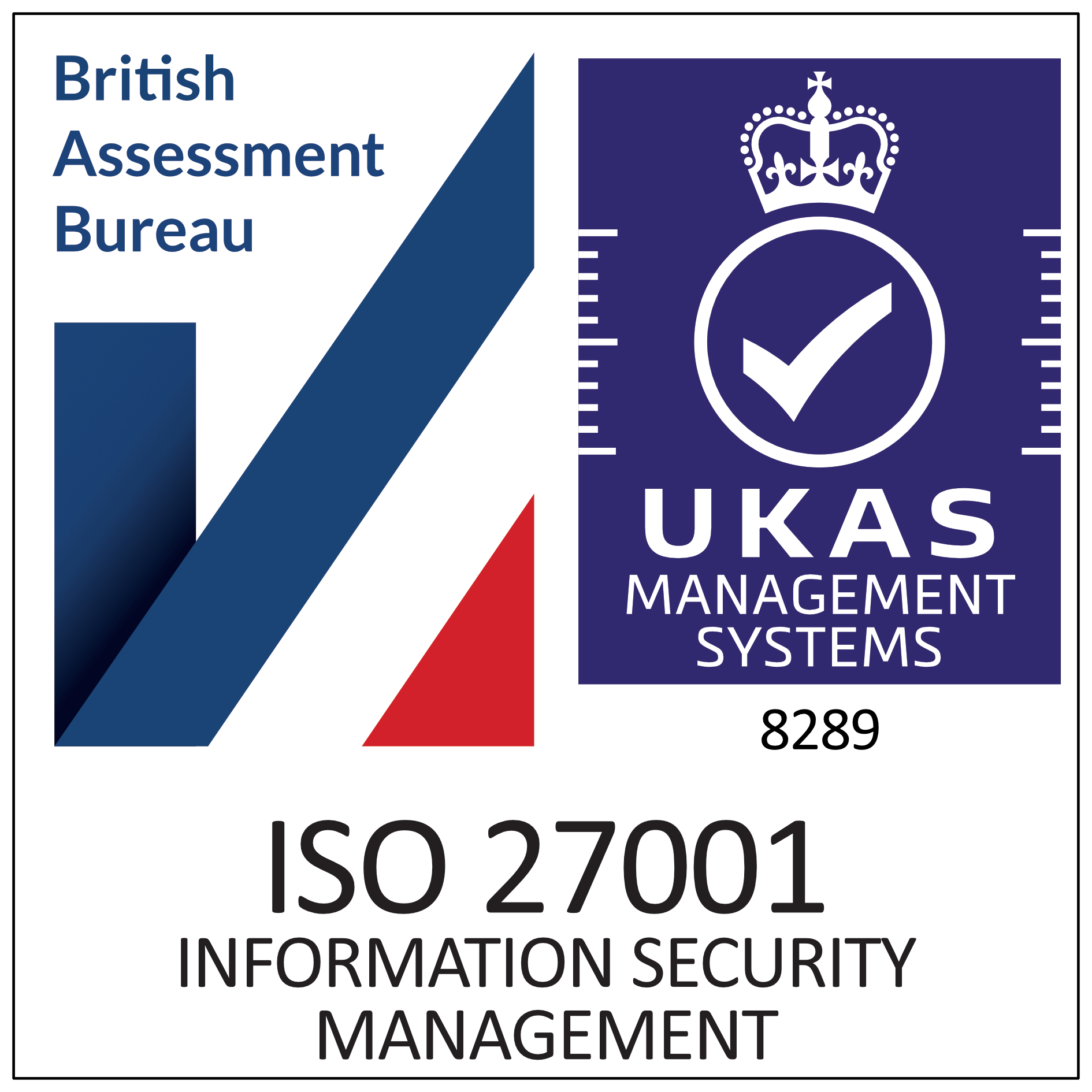The Latest Building Safety Act Guidance Was Released, What’s Changed & What Hasn’t

Following a consultation on Higher-Risk Buildings, UK Government has released its findings and new guidance. Here we summarise the consultation response, what has changed, and what hasn’t…
What was the consultation about?
On 9 June 2022 the Department for Levelling Up, Housing and Communities (DLUHC) launched a Consultation on the Higher-Risk Buildings (Descriptions and Supplementary Provisions) Regulations. The consultation sought views on governments’ full proposals for the regulations. The consultation ran for 6 weeks from 9 June 2022 to 21 July 2022. It was published on the department’s online consultation platform Citizen Space, as well as on gov.uk.
The Higher-Risk Buildings (Descriptions and Supplementary Provisions) Regulations complete the definition of higher-risk building. Higher-risk buildings are buildings which will be required to meet the legal requirements of the new more stringent regime for building safety.
There are two parts of the new regime. The first establishes a new regime for the design and construction of new higher-risk buildings and building work to existing higher-risk buildings. The second establishes a new regime when higher-risk buildings are occupied.
This particular consultation was split into several sections, covering the definition of a ‘building’, exemptions and inclusion during all lifecycle stages, how to measure the height of buildings, how to count its stories, and finally, the impact, the act has on equalities. It sought views on 26 questions. This response summarises respondents’ views by considering comments made in relation to each of the questions included in the consultation document.
Who took part?
Overall, there were 101 respondents to the consultation: 68 responded on behalf of an organisation, 30 on behalf of individuals and 3 decided not to confirm either way. Respondents varied in terms of background and organisations from developers, building control professionals, fire engineers, local fire services, housing associations, local councils, tenants and industry trade bodies.
What has changed?
Following the consultation, respondents provided their views, concerns and suggestions across the various sections. As a result, the government reviewed and accepted that more clarification was required in reference to a number of areas, they are as follows (please note that changes to the regulations set out here, as released on 19 December, are still subject to parliamentary approval);
Plant and Machinery Inclusions
Arguably the biggest change is the inclusion of plant and machinery within the definition of a building;
Respondents’ Concerns
The most common concern was the exclusion of plant rooms and machinery from the definition, with many respondents recommending that plant rooms and machinery be included within the building definition.
The reasoning most given for this was that plant machinery is integral to the overall safety of the building. It was also raised that plant rooms could contain firefighting or suppression equipment, as well as other key infrastructure important to the overall safety of the building.
Some respondents also raised that plant rooms and machinery could be a source of potential fire or structural collapse.
Government Response
The updated (building) definition will include plant rooms and machinery within the definition of building, giving the Building Safety Regulator (BSR) the ability to regulate them as parts of higher-risk buildings.
This amendment, they state, will make sure that parts of a building which contain important fire safety equipment are included within the boundaries of higher-risk buildings.
Building Definition
A hot potato in terms of discussion in the industry is this particular subject. So great to see more definition provided;
Respondents’ Concerns
The proposed definition, respondents suggest, was potentially confusing and vague. They felt that the definition could define a building more clearly, and without using the word ‘building’ within the definition.
A smaller number of respondents raised comments about how several buildings classified under a single building name should be considered and how buildings attached by a wall (for example terraced buildings) should be defined.
A small number of respondents also raised that the proposed definition did not completely align with the Building Act 1984.
Government Response
They have amended the proposed definition in the regulations to more clearly set out what is and is not considered a building for the purposes of the design and construction and occupation parts of the new regime.
The updated definition is significantly more detailed and provides different definitions of building for the purposes of the design and construction and occupation parts of the new regime.
The updated definition can be found in the regulations currently being laid in parliament and a further explanation of the updated definition can be found in the related explanatory memorandum (PDF 65kb).
The government has made these changes to appropriately capture complex buildings, specifically, large, attached buildings, in the definition. The updated definition will allow the operational requirements in occupation to be met more easily.
How to Measure Buildings Heights
This in particular has always created confusion amongst building owners and particularly contractors working on new projects in design and construction phases and whether or not they need to comply with the new regime;
Respondents’ Concerns
There may be potential issues with the proposed method for measuring height and suggested small technical changes to the method. They noted that the method was unclear and should be further explained including further clarification on the meaning of ground level and where this should be measured from as users may interpret ground level in different ways.
They also requested further clarification on whether roof levels should be counted, particularly in the scenario it is used as a rooftop garden or similar and whether roof levels should always be included within the height measurement regardless of use.
Intriguingly, a small number of suggestions that levels with plant machinery and basements should be included within the height measurement. This was to prevent people ‘gaming’ the system and building multiple plant levels or basements to house residents.
Others suggested that the method for measuring height better aligned with Approved Document B and for further clarification on how this method will work alongside existing methods for measuring height.
Government Response
They have made some small amendments to the method for measuring height. They have further clarified what ground level means in the regulations by setting out that buildings should be measured from the lowest part of the surface of the ground to which they are adjacent. This will make sure, they state, that owners of buildings built on uneven ground e.g. a hill, are not able to game the height threshold.
They also amended the definition to make sure not all plant machinery levels are excluded and set out that only levels which consist exclusively of rooftop plant rooms or rooftop machinery are excluded from the height measurement. This makes relative sense given that these exclusive plant areas are/should be out of bounds and inaccessible by residents.
The chosen method for measuring height also makes sense as it is a known standard for the sector and is effectively the vertical distance a person would need to ‘travel’ to escape a building from the top floor. These amendments can be found in the regulations currently being laid in Parliament.
How to Count Building Storeys
As with building heights, industry sought views on the method for measuring the number of storeys in higher-risk buildings and further definition on ‘galleries’ for the purpose of measuring higher-risk buildings;
Respondents’ Concerns
The method for measuring stories was unclear and should be further explained. Requests were also made for further clarification on the meaning of ground level and where this should be measured from, particularly in reference to buildings built on sloping sites and whether roof level should be counted, and what would be considered a finished roof level.
Another interesting suggestion was that plant machinery and basements should be included within the height measurement in order to prevent people again ‘gaming’ the system and building multiple plant levels or basements to house residents(!).
Concerns also that gallery floors could be used to game the system if they are not counted. Whilst some respondents suggested that gallery floors be counted as storeys regardless of their floor area, others suggested that the definition of gallery should be amended so that smaller galleries are counted as storeys.
Government Response
They have made some small amendments to the measuring of storeys, aligning with the changes made to the method for measuring height. They also further clarified the meaning of ground level and set out that the number of storeys in a building should be measured from the lowest part of the surface of the ground to which they are adjacent. This should make sure that owners of buildings built on uneven ground, e.g. a hill, are not able to ‘game’ the height threshold.
As again with heights, they also amended the definition to make sure not all plant machinery storeys are excluded and set out that only storeys which consist exclusively of rooftop plant rooms or rooftop machinery are excluded from the storey measurement.
In respect of ‘gallery’ floors, they also amended the definition to set out that ‘galleries are floors whose internal floor area is less than 50% of the internal floor area of the largest storey vertically above or below’. This is instead of defining galleries as storeys whose floor area is less than 50% of the largest storey in the building. This is to further prevent ‘gaming’ the regime.
What hasn’t changed?
Higher-Risk Building (HRB) Heights
Whilst some definitions were hoped for, this was the one definition most people we have spoken with just assumed the minimum height requirements would be lowered from 18m down to 11m, in line with related legislation, such as the Fire Safety Act 2022. But surprisingly, this was not the case;
Respondents’ Concerns
Some respondents also provided comments outside the scope of this consultation with many respondents suggesting that the 18-metre or 7-storey height thresholds should be lowered. Some suggested this should be 11 metres or 4 storeys. Particularly, these respondents felt that care homes and hospitals should be included at a lower height threshold of 11 metres or no height threshold at all.
A smaller number of respondents suggested there should not be any height threshold during the design and construction part of the regime for any building type.
Government Response
While the government recognise that height is not the only indicator of risk, they chose height as evidence shows the risk to multiple households is greater when fire does spread in buildings which are at least 18 metres.
They are therefore including hospitals and care homes which meet the 18 metre, or 7 storey height-threshold in the design and construction part of the new regime as this means high-rise buildings which may be occupied by those who are unable to evacuate quickly, or without assistance, are designed and constructed with more stringent oversight by BSR.
Hospitals and care homes are also regulated as workplaces through the Regulatory Reform (Fire Safety) Order 2005 so they are already subject to duties placed on those in control of these buildings to make sure these premises are safe. They are also subject to the local Fire and Rescue Authorities’ and the Care Quality Commission’s inspection regimes, who will take action if required.
Higher-Risk Building (HRB) Classifications
This was possibly the most anticipated definition, with many expecting a widening of the building types, with hotels specifically expected to join the cast. But alas, no change, just simply a further definition of what buildings are not currently classified as Higher-Risk Buildings;
Respondents’ Concerns
Some respondents raised concerns with the government’s proposal to exclude secure residential institutions (e.g. prisons), temporary leisure establishments (e.g. hotels) and military premises (e.g. military barracks) from the definition of higher-risk building during the design and construction phase.
They also raised concerns about the proposals to exclude care homes, hospitals, secure residential institutions, temporary leisure establishments and military premises from the definition of higher-risk building during the occupation phase. Although, in the interest of a balanced debate, some respondents were also supportive of the exclusion of military premises on the basis that these buildings have their own safety requirements and that building owners will liaise with the BSR as appropriate, although a small number of respondents did raise concerns about the safety standards of military accommodation.
There were specific concerns about buildings which may have people sleeping in them or house vulnerable people being excluded from the scope of this part of the regime, with some responses suggesting these buildings should be included within scope. This included those housed in secure mental health facilities or secure local authority accommodation. A small number of respondents also felt military premises should be included in the regime.
Hotels and aparthotels were a particular concern with some respondents feeling they should be included within the scope of the new regime as people sleep overnight within hotels and may be unfamiliar with their surroundings in the event of a fire. There were concerns about the boundary between hotels and aparthotels and how and where this would be defined. A small number of respondents felt that apartment style hotels specifically should be included within scope on the reasoning that they are similar to residential buildings.
Government Response
The Government states that they have always been clear the focus of the regime is on high-rise residential buildings. As such, they are not proposing to amend the types of buildings excluded from the definition of higher-risk buildings through these regulations.
All building work must meet building regulations requirements. Some elements of the new design and construction regime will also apply to all buildings. There will be dutyholder requirements on all those involved in the procurement, design and construction of buildings intended to proportionately address risks for all building work in the design and construction phase.
The BSR will also have wider responsibilities for overseeing the safety of all buildings, including identifying patterns of regulatory failure and making recommendations for improving standards. This will drive continuous improvement in the performance of all buildings to protect the safety of occupants.
The government have, therefore, excluded hotels and other temporary leisure establishments, as well as secure residential institutions like prisons. In occupation these buildings are also already regulated by the Fire Safety Order, and generally, these buildings are staffed 24/7, have multiple routes of escape, signage and emergency lighting to assist evacuation and have a higher level of detection and alarm systems than residential buildings.
HRB Inclusions and Exclusions At Each Stage
Again, no change here at all, simply a confirmation of buildings that do not either classify as a HRB and therefore are not required to comply with the regime during either the design and construction or occupation stages;
|
Designated Higher-Risk Buildings (HRBs) – 18m or 7-storeys high, whichever is arrived first |
||
|---|---|---|
|
Building Use |
Design and Construction Phase |
Occupation Phase |
|
Residential (or buildings with at least 2 residential units* meeting the height specification) |
|
|
|
Hospital |
|
|
|
Care Home |
|
|
|
Specific Non-Designated Higher-Risk Buildings (HRBs) |
||
|---|---|---|
|
Building Use |
Design and Construction Phase |
Occupation Phase |
|
Hotels |
|
|
|
Secure Residential Institution (e.g. prison) |
|
|
|
Military Barracks |
|
|
|
Living Accommodation provided by MoD |
|
|
|
Living Accommodation for His Majesty’s Forces and or any visiting force or an international headquarters or defence organisation. |
|
|
Key
![]() = Building does have to comply with the new regime during this particular phase.
= Building does have to comply with the new regime during this particular phase.
![]() = Building does not have to comply with the new regime during this particular phase.
= Building does not have to comply with the new regime during this particular phase.
* The Building Safety Act defines residential unit as a dwelling or any other unit of living accommodation, for example a flat or rooms in a university hall of residence where amenities are shared.
Personal Emergency Evacuation Plans (PEEPS)
This was a real surprise when the act received Royal Ascent, in the sense that PEEPs were not to be made mandatory, at least not within the Building Safety Act, one assumes this is because the government assumes this to be covered in other legislation elsewhere, nevertheless, the industry seems to be still in the dark as to where this may be if indeed it does exist;
Respondents’ Concerns
Respondents raised the potential impact of the regulations on vulnerable people, particularly people who may have disabilities or older people who may be unable to self-evacuate. They felt that the scope of the new regime should consider and support the safety of vulnerable people and raised the importance of Personal Emergency Evacuation Plans and the need for these to be in place.
Government Response
Frustratingly, this was one particular concern that seems to have been… (I’m trying to think of an appropriate opposite word to ‘Respond’ without putting me at risk of being libel!), let’s say, directly unaddressed.
The government simply confirms that all the potential equalities impacts of our proposals have been carefully considered as part of our public sector equality duty requirements and that they are content there is no evidence of a negative impact on any one group which shares a protected characteristic. They confirm that they have passed any relevant responses on to relevant departments including the Home Office.
Summary
Overall, we would suggest a rather disappointing resolution to the consultation. Whilst some government responses absolutely make sense and do provide further much-needed clarification, such as how to measure building heights and count the number of storeys, in particular, areas such as the refusal to reduce building heights in line with other related legislation still baffle. Surely this leaves ambiguity between acts and will only generate more confusion with industry.
Their reasoning for this points towards “evidence shows the risk to multiple households is greater when fire does spread in buildings which are at least 18 metres”, if that’s the case, then why does the Fire Safety Act specifically refer to buildings 11-metres or 6-storeys high? Maybe we are missing something, if we are and you know the answer, please do let us know!
Then there is the suggestion that excluding hotels and other temporary leisure establishments, as well as secure residential institutions like prisons in occupation because they are already regulated by the Fire Safety Order, and generally, are staffed 24/7 and have multiple routes of escape, signage and emergency lighting to assist evacuation, and have a higher level of detection and alarm systems than residential buildings also seems a little odd. How does this differ to say hospitals or student accommodation buildings? Again, if we are missing something, let us know!
This review and article was written by our CPO Scott Pilgrim. Should you want to discuss any of his findings or discuss the act in general, or, how Operance can help you comply with the Building Safety, please feel free to contact him and book in a conversation or demonstration of the world’s first purpose-built golden thread platform here: Request a Demo | Operance .
GOV.UK Notes
GOV.UK will be publishing full guidance on the regulations once they are approved by parliament. This will be made available before the new regime comes into force and becomes law, currently dated as 6th April 2023.
Changes to the regulations set out here, as released on 19 December, are still subject to parliamentary approval.
Book an Operance demo today:
NEWSLETTER
Revolution Is Coming
Subscribe to our newsletter so we can tell you all about it.
You can unsubscribe at any time and we don’t spam you.



















